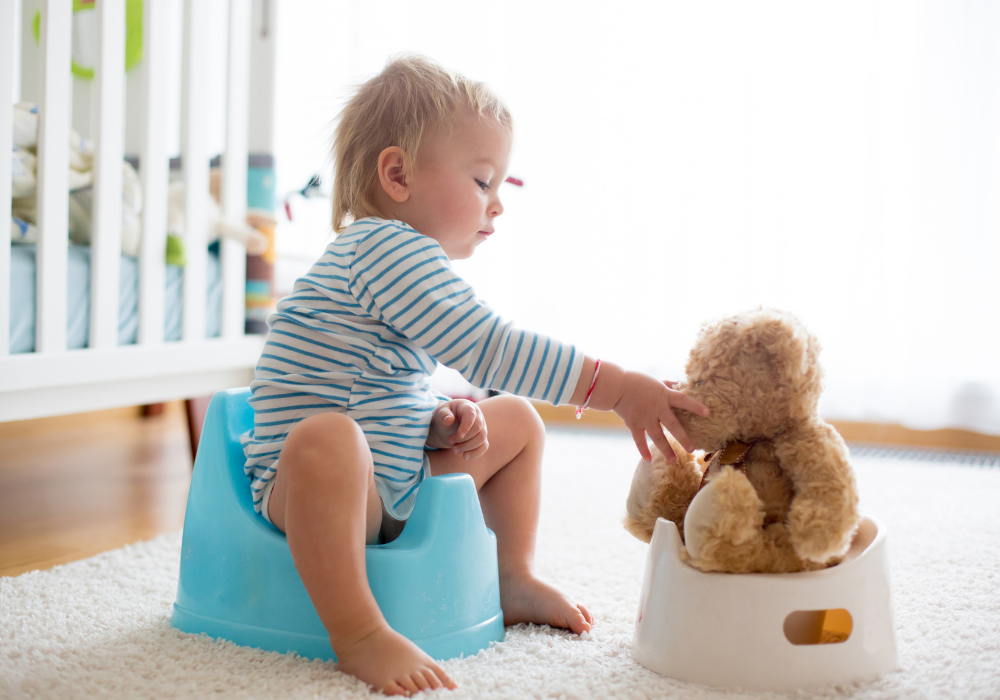Potty training is a significant milestone in a child’s development, marking the transition from diapers to using the toilet. While it can be a challenging and sometimes frustrating process, with patience, consistency, and a positive attitude, both parents and children can navigate this journey successfully. In this guide, we’ll explore the basics of potty training, effective strategies, and tips to make this transition as smooth as possible.
1. Know When Your Child is Ready
One of the keys to successful potty training is timing. Not all children are ready at the same age, so it’s important to look for signs of readiness. These signs can include showing interest in the toilet, staying dry for longer periods, expressing discomfort with dirty diapers, and understanding simple instructions.
2. Introduce the Concept
Before diving into full-fledged potty training, introduce the concept of using the toilet to your child. Let them see how it works, and read books or watch videos about potty training together. Make the toilet a familiar and non-threatening environment.

3. Choose the Right Equipment
Invest in a child-friendly potty chair or a toilet seat reducer to make your child feel comfortable. Some children may be scared of the regular toilet, so having a smaller, colorful potty can make the experience less intimidating.
4. Be Consistent and Establish a Routine
Consistency is key in potty training. Set a regular schedule for toilet breaks, especially after meals and before bedtime. Be patient and offer gentle reminders, praising your child when they successfully use the potty. Positive reinforcement, such as clapping, high-fives, or a small reward, can be incredibly motivating for young children.
5. Demonstrate and Encourage Imitation
Children learn by imitating adults. Allow your child to see how you use the toilet, and encourage them to imitate your actions. Sometimes, a simple demonstration can demystify the process for them.
6. Dress for Success
Dress your child in clothes that are easy to remove. Avoid complicated buttons or snaps, as this can delay the process and lead to accidents. Training pants or underwear with their favorite characters can also be a motivating factor.
7. Stay Calm and Patient
Potty training is a learning process, and accidents will happen. It’s important to stay calm and avoid expressing frustration. Accidents are a natural part of the learning process, so reassure your child and clean up without making them feel guilty.
8. Be Prepared for Nighttime Training
Daytime and nighttime potty training are different challenges. It’s common for children to master daytime control before nighttime. Limit drinks before bedtime and encourage your child to use the toilet before sleep. Bedwetting is normal, so be patient and understanding during this phase.
9. Celebrate Successes
Celebrate every success, no matter how small. Your child will gain confidence and motivation from your positive reinforcement. Create a sticker chart where your child can add a sticker every time they use the potty. When the chart is full, celebrate with a special treat or outing.

10. Seek Professional Help if Needed
In most cases, potty training is a natural process that children will master with time. However, if you encounter significant difficulties or if your child shows signs of distress, consider consulting a pediatrician or child psychologist for guidance. These professionals can provide expert advice tailored to your child’s specific needs.
Remember, every child is unique, and what works for one may not work for another. Stay patient, be consistent, and most importantly, celebrate the successes, no matter how small. Potty training is a significant milestone, and with your support and encouragement, your child will successfully make the transition from diapers to the toilet, paving the way for more independence and confidence in their young lives.


